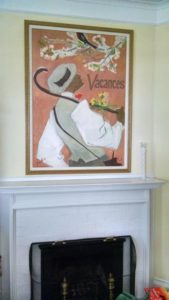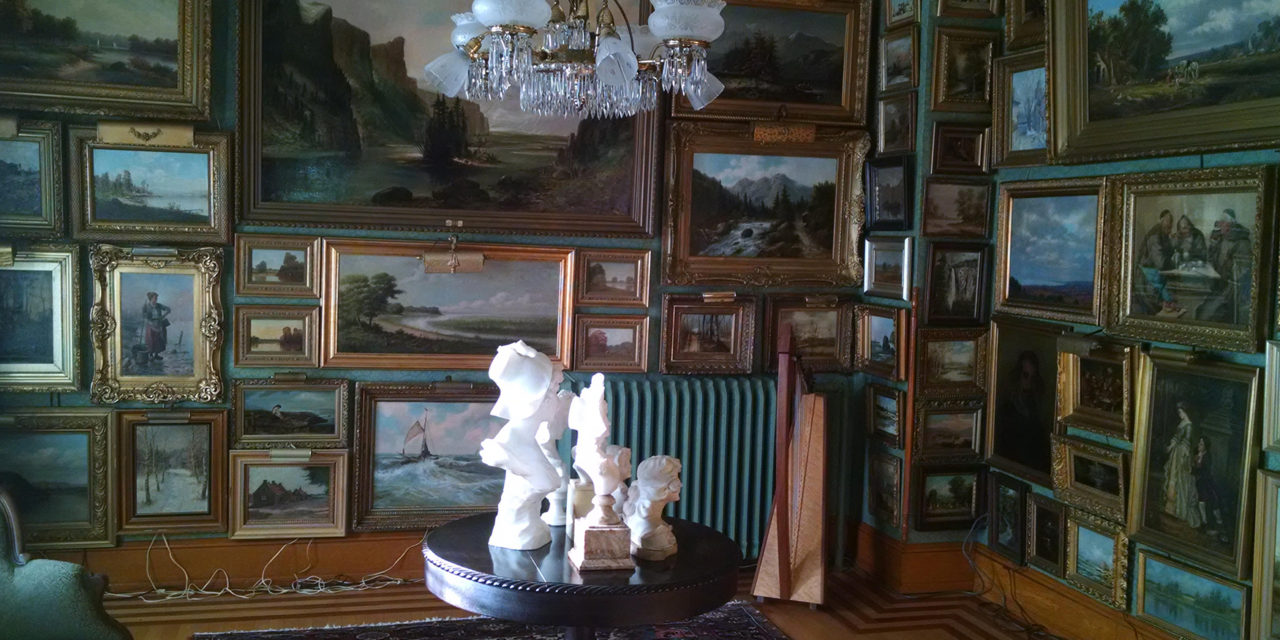By Stuart Dempsey
Finding a piece of art that inspires and stimulates the senses is a relatively easy task. After all, the Milwaukee area is filled with wonderful galleries, framing shops and resale stores offering an abundance of art of every genre. What becomes difficult however, is how to best display art in a home or office setting.
Where one hangs a painting, photograph or print, the type of frame it is in, the wall color, lighting– even the height of a piece on the wall—will all affect the impact and overall appeal of the piece. Sometimes, just stepping back from your collection and presenting it in a new way can increase your enjoyment of art and heighten the experience for others who view it.
A Tailored Approach
No matter what type of art you own or collect, there are countless ways to display it. Finding the most aesthetically pleasing method that compliments the artwork should be the guiding principle in deciding how to hang individual works or an entire wall of art.
One way is to create a custom tailored look.
Framing pieces in identical frames can unify dissimilar works and create the feeling of a single unit of art. The pieces can vary in size and still feel cohesive as a unit if the frames and matting are the same style and color. It is simple to create a modern, clean feeling with this method.
“When hanging in a group of four to six pieces, people tend to get too close to it–they are right on top of it and can’t really see the effect. It doesn’t have to be perfect or symmetrical, but you might need two people to really get the layout right,” says Maureen Madigan Sievers, owner of the eponymous interior design firm in Milwaukee.
Out On A Ledge
Art ledges, narrow shelves usually no more than six inches deep, allow you to mix up your art collection and change the overall look at will. These shelves are mounted to the wall and pictures are placed on them leaning back towards the wall at a slight angle. Pictures float on the shelves and can be rearranged at the slightest whim.
Art ledges also allow for interesting three-dimensional layering. It is fun to place several pieces of art on the shelves, each overlapping the other. The beauty of using this method to display your collection is that if you tire of how it looks, you can mix it up without putting another nail in the wall. This is probably the safest method to use for those who are indecisive about where to hang their pictures.
Art ledges come in many sizes, colors and styles to compliment any interior. They are available at home stores, some framing galleries and at many of the big box stores.
Mix It Up
Some of the more interesting displays of art are those that combine an unexpected mix of works to energize a room. Using what you have in new and creative ways can enliven any interior and make the artwork seem fresh.
Mixing two and three dimensional art on the walls, or setting a table against a wall and using complimentary sculpture below paintings or prints can create drama, depth and the illusion of space.
“One thing I have noticed is that most people hang art too high. It should be at eye level–especially in dining rooms where it will mostly be viewed from chair height,” explains Sievers.
Over the Top
If you are a serious collector of art, and don’t have a lot of wall space to spare, you might want to look to historical hanging methods—especially salon style. Here works are displayed in a “stacked” manner, with the frames practically touching. Large groupings can dominate a wall, creating an alluring focal point for a room.
This system can work for totally dissimilar works in various frames, as well as for works all framed identically. The beauty of stacking art is you can fit a lot of it in a small amount of space. The drawback is that it can become a bit busy, and difficult to appreciate individual works out of the whole ensemble.
This is a great method to use on stairways since the wall space in these areas is often overlooked. There is a tremendous amount of wall space waiting to be decorated on staircases, but consideration must be paid to lighting. If it is dark and shadowy, no matter how exciting the artwork, it will not have the impact it should.
 Let There Be Light
Let There Be Light
All collections of art benefit greatly from good lighting. Consider lighting as important a factor as framing or displaying art. Natural light is the first option that should be considered when choosing locations for your art display, but good lighting at night can create magic for you and your guests as well.
Paintings can be lit by individual picture lights, track lights, ceiling spots and more. “Picture lights are just fantastic. There are battery operated LED’s and there are some very nicely styled lights available today,” says Sievers.
Running wires or retrofitting a home can become expensive and problematic. Often, a well placed table lamp can cast an appropriate glow on art, illuminating it just enough to highlight the details. However you decide to display your art, take a creative approach and stand back often to evaluate the result. And remember, there is nothing wrong with changing things out once in awhile. Art should transport you and make your indoor environment more livable.
Quotes from Maureen Madigan Siever Interiors
msievers@wi.rr.com | (414) 405-3153





